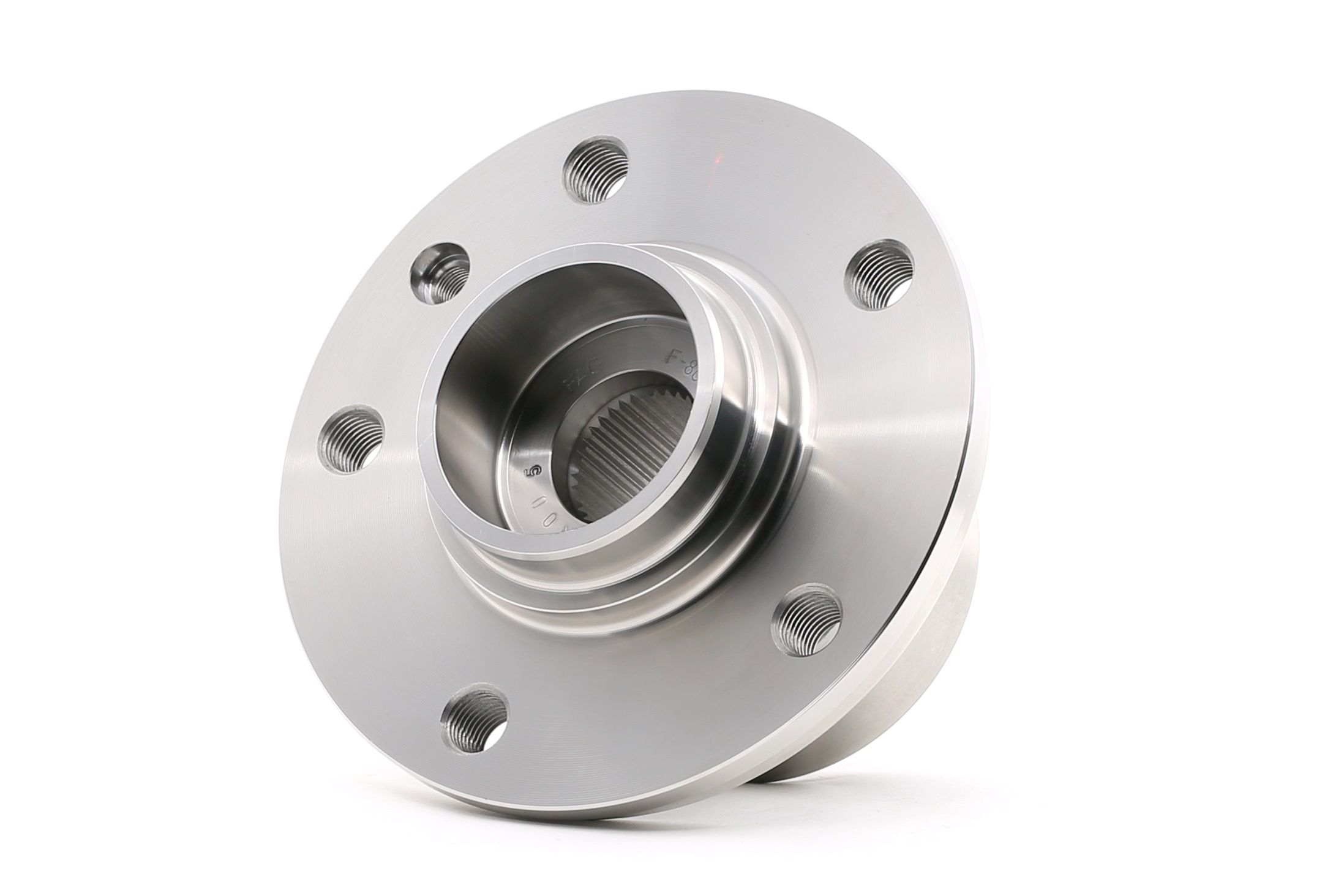Wheel bearing rear and front for car
Order cheap Wheel bearings rear and front

Hub bearing: top brands
Wheel bearings for leading car makes
Wheel bearings for top car models
AUTODOC Bestsellers: Hub bearing at a good price
The top-selling spare parts in the Wheel bearing category. Browse our huge wide range of high-quality car parts from top brands in the category Wheel bearing and others.
 SKF VKBA 3643 Wheel bearing kit
SKF VKBA 3643 Wheel bearing kit
 SKF VKN 600 Wheel bearing kit
SKF VKN 600 Wheel bearing kit
 SNR R154.55 Wheel bearing kit
SNR R154.55 Wheel bearing kit
 SNR R154.61 Wheel bearing kit
SNR R154.61 Wheel bearing kit
 SKF VKBA 6996 Wheel bearing kit
SKF VKBA 6996 Wheel bearing kit
 SNR R154.56 Wheel bearing kit
SNR R154.56 Wheel bearing kit
 SKF VKBA 3536 Wheel bearing kit
SKF VKBA 3536 Wheel bearing kit
 SKF VKBA 3567 Wheel bearing kit
SKF VKBA 3567 Wheel bearing kit
 SKF VKBA 1358 Wheel bearing kit
SKF VKBA 1358 Wheel bearing kit
 FAG 713 6106 10 Wheel bearing kit
FAG 713 6106 10 Wheel bearing kit
 SKF VKBA 906 Wheel bearing kit
SKF VKBA 906 Wheel bearing kit
 SKF VKBA 3576 Wheel bearing kit
SKF VKBA 3576 Wheel bearing kit
 SKF VKBA 7011 Wheel bearing kit
SKF VKBA 7011 Wheel bearing kit
 SKF VKBA 3496 Wheel bearing kit
SKF VKBA 3496 Wheel bearing kit
 IJS GROUP 10-1129 Wheel bearing kit
IJS GROUP 10-1129 Wheel bearing kit
Replacement of Wheel bearing: Video repair guide
How to change a rear wheel bearing / rear wheel bearing kit / rear hub bearing / rear wheel hub bearing on BMW 5 E60 TUTORIAL | AUTODOC Top brands t...
Step by Step Video Tutorial for Do-it-yourself Auto Repair. Become an amateur mechanic with Autodoc.
| The bestselling products: | |||||
|---|---|---|---|---|---|
| VKBA 529 | 10-1129 | VKBA 906 | VKBA 915 | VKBA 1355 | VKBA 3455 |
| From popular manufacturers: | |||||
| RIDEX | SKF | FAG | FEBI BILSTEIN | MEYLE | STARK |
| For popular car brands: | |||||
| VW | MERCEDES-BENZ | BMW | AUDI | OPEL | FORD |
| Wheel bearing – technical details | |||||
| Inner Diameter [mm] | Inner Diameter 2 [mm] | Fitting Position | |||
| 25 | 35 | 29 | 17,5 | Rear Axle | Front Axle Right |
| 40 | 45 | 22 | 35 | Front Axle Left | Right |
| 42 | 29 | 40 | 41 | Left | Front Axle |
FAQ
An average service life of these components is 100,000–150,000 kilometres. The reasons of their breakdown may be as follows:
- Incorrect installation caused by the use of an inappropriate tool or ignoring the prescribed axle nut tightening torque.
- Misaligned wheels.
- Faulty components of the suspension and brake systems.
- Driving on poor quality roads or in cross-country conditions.
- Loss of leak-tightness of the wheel hub assembly.
- Wheel rims of a higher diameter and offset than standard, and tyres with the parameters that do not meet your car’s specifications.
- Aggressive driving style.
- Road accident.
Note that the parts on the front axle wear faster than those on the rear. This is due to the fact that the former are exposed to higher loads.
The signs of the components’ poor condition:
- brake disc overheating caused by a stuck bearing;
- abnormal sounds when accelerating and turning corners;
- vibration of components of the suspension and axles;
- steering free play;
- increased fuel consumption
- the car pulls to one side.
The tools and equipment you need:
- a lifting jack or a car lift;
- wheel chocks.
The condition of the parts can be checked on a stationary and moving car. When stationary:
- Inspect your car in a closed garage, where no sounds from the street can be heard.
- Apply the parking brake.
- Put the wheel chocks under the wheels.
- Raise the car and rock each wheel individually.
- Noise, free play, and hindered rotation are the signs of failure.
To check the parts on a moving car:
- Choose a paved road section with no other road users.
- Accelerate your car to about 40–50 km/h and steer smoothly. When you rotate the steering wheel to the right the car’s centre of gravity shifts to the opposite side, and the load on the left wheel bearing is increased. A humming noise coming from the component at that moment is the sign that it’s faulty. To check the condition of the part on the right side, steer to the left.
- Test the components also on a straight road section. Accelerate the car to 60 km/h. If the parts are faulty, you will hear an abnormal noise.
To replace the parts, you need to have certain experience and special tools. During the installation, there’s a risk of damaging the component and ingress of sand or debris into the hub. This can significantly reduce the service life of a new part. So we recommend that you have this job done at a garage only.
-
Safe Order 200 days
-
Free Shipping
-
А convenient app for buying car parts
-
Car repair videos
